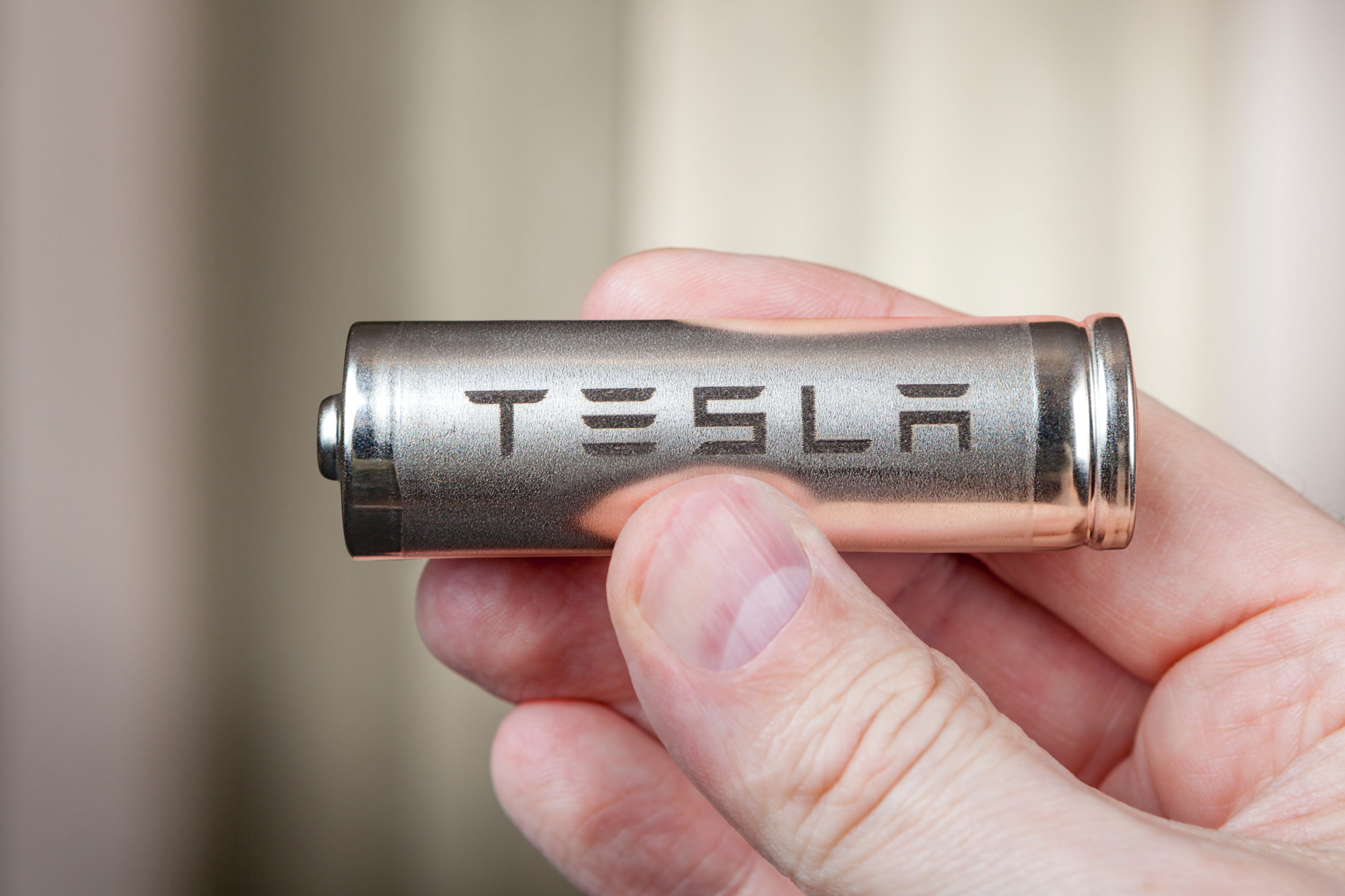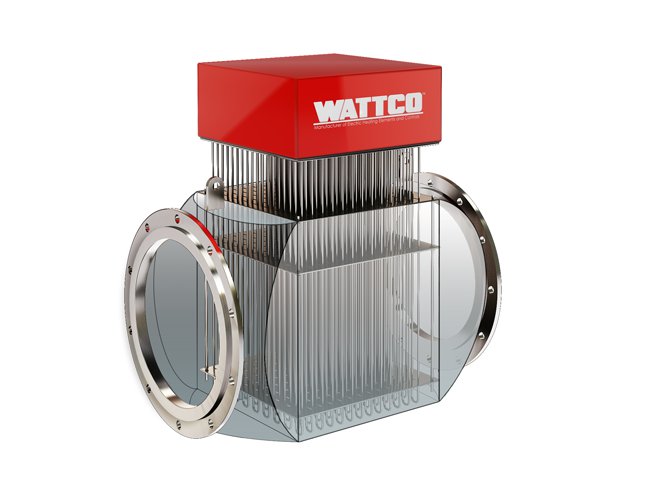Tesla Battery Technology and its Application in other Industries
Last updated on April 22nd, 2021 at 06:50 pm
 The introduction of the Roadster in 2006 made Tesla a market leader in the Electric Vehicle (EV) market. Ever since they have been threatening the monopoly of the Internal Combustion (IC) vehicles. The ability to produce EVs which can go further on a single charge along with revolutionary safety and autonomous driving features has brought Tesla to the forefront of EV and battery technology.
The introduction of the Roadster in 2006 made Tesla a market leader in the Electric Vehicle (EV) market. Ever since they have been threatening the monopoly of the Internal Combustion (IC) vehicles. The ability to produce EVs which can go further on a single charge along with revolutionary safety and autonomous driving features has brought Tesla to the forefront of EV and battery technology.
In this article, we explain Tesla battery technology and how it differs from its competition. As well as its role in applications outside the general realm of the EV technology
Tesla Battery Technology Explained
Tesla battery packs have a reputation as virtually maintenance-free and economical to charge. With their fast-charging DC setup, they are charged quickly and with the flexibility offered by the battery packs in terms of their modular design. As such, Tesla has been able to offer standard and extended range options for its vehicles. Tesla’s battery pack differs considerably in its design and chemistry compared to its competitors like Chevrolet Bolt, BMW i8, or Nissan Ariya.
Looking at the battery chemistry, all EV manufacturers generally use the baseline architecture of the Lithium-ion (Li-ion) battery. Tesla uses the LINiCoAlO2 (Lithium Nickel Cobalt Aluminum) chemistry because it offers the highest energy density within various chemistries of the Li-ion architecture, longevity, and best-in-class charging performance. Chevrolet Bolt and BMW I-series use LiNiMnCoO2 (Lithium Nickel Manganese Cobalt) chemistry which has lower energy density compared to Tesla’s chemistry but is generally regarded as a safer option especially at high temperatures.
Tesla Battery Evolution
The evolution of Tesla’s battery back can be divided into three phases or design evolutions. In 2009, the first phase of battery packs was introduced in Tesla Roadster and Model S. The second phase was introduced from 2016 till 2018 in Model S Gen 2 and Model X. The third and so far, the latest phase is introduced in the Model 3.
In the first phase, Tesla was using the Panasonic 18650 Battery which has around 10.5-11.5 g of Cobalt and a pure graphite anode. As the design progressed from first to third phase the amount of cobalt was reduced, and anode material was changed from pure graphite to Graphite and Silicon combination anode. The reason for this was primarily due to the price of the Cobalt which is so far the most expensive material used in EV batteries and has been the main factor of the high price of Tesla vehicles.
The introduction of the silicon in the anode construction of the Panasonic batteries tesla was able to improve the energy density of the battery packs. One thing to remember here is that although pure Silicon anode would make sense for higher energy density battery packs, silicon expands 350%-390% between a full charge to discharge cycle but graphite only expands less than 10% thus maintaining the structural integrity of the battery packs and preventing the LI-ion batteries from leaking.
The Model 3 introduced phase 3 battery evolution for Tesla, where the slightly bigger 21700 Panasonic battery was used. This uses less cobalt compared to phase 1and 3 but still uses the similar hybrid graphite and silicon anode like phase 2 of the battery evolution.
Modular Design of Tesla battery Pack VS Customized design of Competitors
Another important way that Tesla batteries differ from the competition is the philosophy of using individual battery cells connected in parallel and series. They assemble into a battery pack unlike a custom battery pack, like prismatic batteries in the BMW i3 or the pouch batteries used in the Chevrolet Bolt. The reason is the flexibility and cost-effectiveness that is offered by assembling these small battery cells, thus by connecting more of the battery cells in parallel Tesla increases the battery capacity thus offering the standard and extended range versions of the Model 3.
Another reason is enhanced commonality among the vehicle because the Panasonic 21700 Battery cells used in the Model 3 are also used in the Tesla Power wall (home energy solutions) and Model X, Model Y, and Cyber Truck.
Applications in HVAC Industry
 There has been a lot of discussion, and a public announcement by Elon Musk, about implementing Tesla Battery technology in the Heating, Ventilation, and Air Conditioning (HVAC) sector. This will be paired with the heat pump technology developed by Tesla for the Model Y, HEPA filters. They are engineered to a scale that Tesla claims that EVs it produces can operate in the “Bioweapon defense mode”. This works in conjunction with the Tesla Solar Roof to provide charge to the Tesla battery pack (Powerwall). In turn, this runs the Tesla heat pump for the HVAC system, providing the necessary power to the Smart home devices which can be offshoot of the autonomous driving technology That Tesla developed for its EVs.
There has been a lot of discussion, and a public announcement by Elon Musk, about implementing Tesla Battery technology in the Heating, Ventilation, and Air Conditioning (HVAC) sector. This will be paired with the heat pump technology developed by Tesla for the Model Y, HEPA filters. They are engineered to a scale that Tesla claims that EVs it produces can operate in the “Bioweapon defense mode”. This works in conjunction with the Tesla Solar Roof to provide charge to the Tesla battery pack (Powerwall). In turn, this runs the Tesla heat pump for the HVAC system, providing the necessary power to the Smart home devices which can be offshoot of the autonomous driving technology That Tesla developed for its EVs.
This does not look like a far-fetched idea but more of a realistic system-level integration thus venturing Tesla into the home building and infrastructure systems.
Applications in Downhole Tools
Another key industry that can benefit from Tesla’s battery technology is downhole imaging and logging tools. Historically the oilfield services companies have been developing their own Li-ion technology to cope with the challenges of high pressure, high shock, and vibration, high temperature, ability to offer longer on station timing which can only be made possible by improving the energy density of the battery packs.
Tesla’s innovative cooling system and Battery Management System (BMS) can offer a step change in performance, endurance, and safety. It does so by offering a superior cooling and management system which can manage the battery pack down to individual cells and disconnect it in case of a failure.
Application in the Power tools
Typically, power tools like impact wrenches, power drills, circular saws rely on Li-ion batteries. This technology is plagued by heavy batteries, low charge capacities, and a lack of reliability.
One advantage of Tesla battery packs is their modular construction. Using individual battery cells, they can be connected in series to provide the required voltage, or in parallel to provide the required capacity. This modular architecture alleviates some issues power tool manufacturers face, providing a low-cost solution with superior performance.
